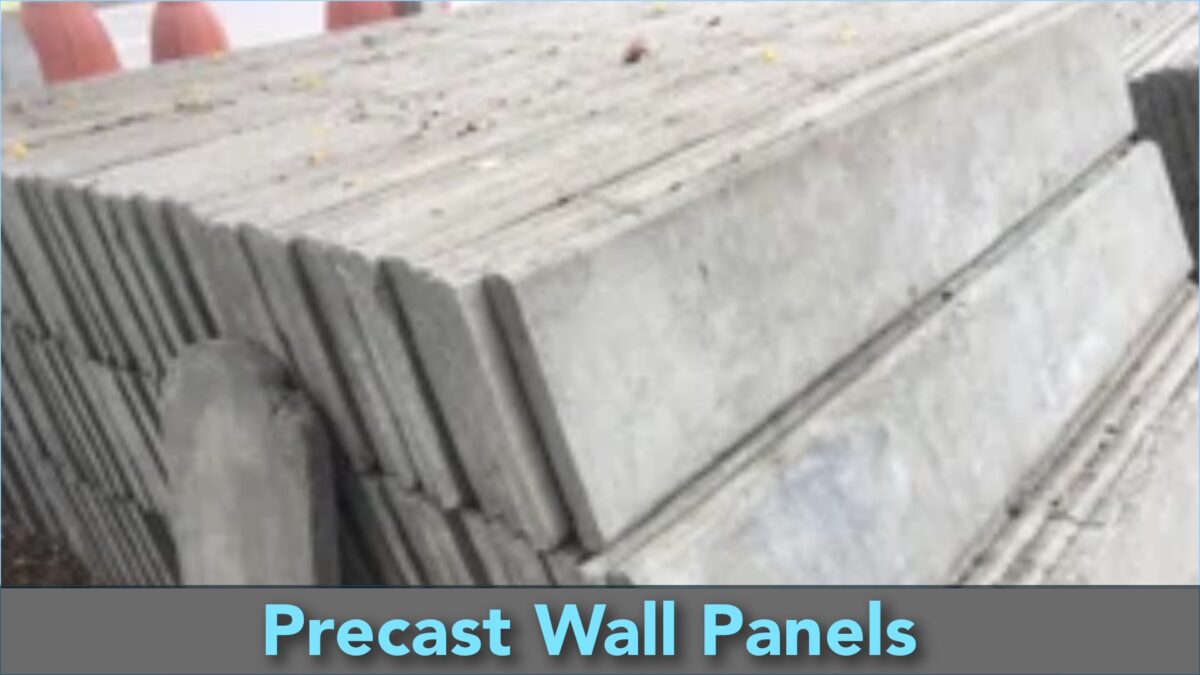A precast wall is a type of wall that is made by pouring concrete or other materials into a mold in a factory. Then the wall sections are taken to the construction site and put together to make a wall. It’s a strong and long-lasting way to build walls for buildings.

Table of Contents
What Is Precast Wall?
A precast wall is made in a factory and then brought to a building site to be put up. They come in different shapes and sizes and can be designed to look nice with patterns or textures.
People make precast walls by pouring concrete into special molds, which are like shapes that the concrete goes into. After the concrete dries and gets strong, the molds are taken off, and the precast wall is finished.
The good thing about precast walls is that they are quick to make and easy to put up, so it helps builders save time and money. They also last a long time and don’t need much fixing up because they can handle harsh weather and things like fire.
Types Of Precast Walls
Concrete precast wall are most popular in construction industry but there are other types of precast walls.
1. Precast Concrete Wall:
Precast concrete walls are the most commonly used type of precast wall. They are made by pouring concrete into molds and allowing it to cure before being transported to the construction site. Once on site, the precast walls are installed and connected to form the building structure. Precast concrete walls are strong, durable, and resistant to fire, making them ideal for many types of buildings.
2. Precast Steel Wall :
Steel precast walls are made by welding steel plates together to form a panel that can be used as a wall. These panels are often used in high-rise buildings because they are lightweight and can be installed quickly. Steel precast walls can also be designed to resist extreme weather conditions, making them suitable for buildings in areas prone to hurricanes or earthquakes.
3. Precast Wooden Wall:
Precast walls can also be made from engineered wood products, such as cross-laminated timber (CLT). CLT panels are made by gluing together layers of wood in alternating directions, creating a strong and stable panel. Wood precast walls are lightweight and sustainable, making them an attractive option for eco-friendly buildings.
4. Precast Masonry Wall:
Precast masonry walls are made by casting concrete blocks or bricks and then assembling them together to form a wall panel. Masonry precast walls can be used for both interior and exterior walls and are often used in residential construction. They can also be designed to have a certain aesthetic appeal, such as exposed brick or stone.
5. Precast Glass Wall:
Precast glass walls are made by casting glass panels in molds and then assembling them into wall panels. Glass precast walls are often used in commercial buildings and can provide an elegant and modern look to the building facade. They can also be designed to allow natural light to enter the building, creating a more inviting and energy-efficient space.
Uses Of Precast Wall
- Precast walls are used in the construction of single-family homes, townhouses, and apartment buildings.
- Office buildings, shopping malls, and other commercial structures are built using precast walls.
- Factories, warehouses, and other industrial facilities are constructed using precast walls.
- Bridges and overpasses are built using precast walls.
- Precast walls are used as noise barriers along highways and other noisy areas.
- Retaining walls for slope stabilization and erosion control are made using precast walls.
- Flood walls are created using precast walls for areas prone to flooding.
- Security barriers around high-security facilities such as prisons, military bases, and government buildings are constructed using precast walls.
- Precast walls are used in the construction of stadiums, arenas, and other sports facilities.
- Barns, silos, and other agricultural buildings are constructed using precast walls.
Advantages Of Precast Wall
- Precast walls provide consistent quality as they are manufactured in a controlled environment.
- Precast walls can be manufactured and installed quickly, reducing overall construction time.
- Precast walls are highly durable and can withstand harsh weather conditions and wear and tear.
- Precast walls can be manufactured in large quantities, reducing the cost per unit, making it cost-effective.
- Precast walls are fire-resistant and can help to prevent the spread of fires.
- Precast walls can be designed to be highly energy-efficient, reducing heating and cooling costs.
- Precast walls require minimal maintenance over their lifetime.
- Precast walls can be manufactured using sustainable materials and processes, reducing their environmental impact.
- Precast walls can be designed in a variety of shapes and sizes to meet specific project requirements, providing design flexibility.
- Precast walls are designed to be strong and secure, providing a safe environment for occupants.
